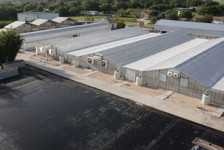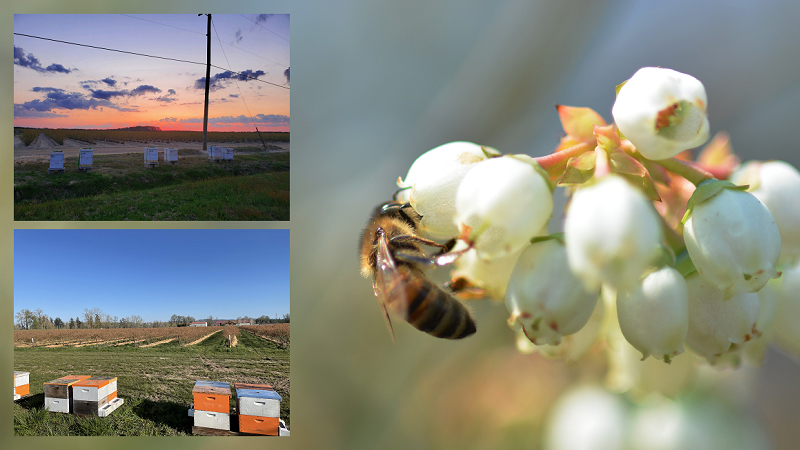
In Florida, during the summer months, fresh produce production pretty much shuts down. But, in the greenhouses of 3 Boys Farm in Ruskin, winter greens flourish while the heat of summer sizzles outside. Robert Tornello, 3 Boys owner, has channeled his passion, ingenuity, and knowledge gained by studying other greenhouse pioneers into establishing an operation that could be a model future farm.
The project, which started two years ago, combines old and new to produce hydroponic crops with an eye toward conservation and energy efficiency. So much so that this year, 3 Boys was among those awarded the 2010 Agricultural Environmental Leadership Award from the Florida Department of Agriculture and Consumer Services.
Time Tested
While in some ways a visit to 3 Boys might feel like a scene out of “The Jetsons,” one of its most important tools used to conserve water dates back to ancient times. Cisterns have been used for millennia to collect rainwater, and Tornello has installed them to supplement water requirements.
The cisterns have 150,000 gallons of storage capacity, which are fed by industrial gutters that collect rainwater from the greenhouse buildings. This water, along with groundwater, is used for the greenhouse cooling pads and as the base for the nutrient-rich solution that feeds the plants. If the main well goes offline due to a weather event, the stored water alone could keep the greenhouses in operation for a minimum of three weeks.
Keeping Cool
While some argue it is impossible to grow greenhouse vegetables in the summer months, Tornello went about doing just that this past summer. In the process, he and his team have learned along the way to work out the kinks in the system. Researchers from the Gulf Coast Research and Education Center in Balm have toured his facilities and will be putting his techniques to work in their own greenhouses.
How do you keep a greenhouse cool on the inside when it is 95°F outside? Tornello says that high-flow cooling pads and moving massive amounts of air through a well-sealed structure is critical to success. “We are moving huge amounts of water through the cooling pads, probably 100-plus gallons from top to bottom of the pads at any given time,” says Tornello. “But, as we re-circulate the water throughout the day, we are actually taking about 10°F of heat out of the water from 72°F to 62°F. That is just from the constant circulation and evaporation.”
Properly sized fans to pull the cool air through the buildings are the next step. Tornello has installed two large, three-phase fans that move 72,000 cubic feet per minute through the 7,000 square feet buildings. That much airflow means the greenhouse structures must be substantial and well sealed. The three greenhouses’ frames are reinforced with 20 tons of recycled steel. “It is basically like having two large airboats strapped to one end your building,” he says. “If you don’t have structure to handle that much pressure, you’ll wrack the building. Most greenhouses in Florida are not built to withstand this kind of air movement, so that’s one reason they shut down in the summer months.”
Tornello uses a closed-loop nutrient flow technique system to feed his plants hydroponically. Each building circulates 18,000 gallons of nutrient-rich water per day. Depending on the crop, this constant flow can be re-circulated for up to two weeks. When water is returned back to the tanks, it is aerated and adjusted for nutrient levels as needed. The discarded hydroponics base water is applied to the farm’s herb house, virtually eliminating nutrient waste water.
Powered Up
A New Biopesticide in the Making To Fight Spotted Wing Drosophila
3 Boys takes on the look of a future farm in its uses of alternative energy. A solar panel array is installed alongside the outside cisterns. They were placed there to help shade and cool the storage tanks. The panels will generate 20 kilowatt hours of power and will supplement energy needs on the farm and can operate crucial solar water pumps in the case of a power outage when the grid goes down. In addition, a back-up system powered by liquefied natural gas will keep other critical systems in operation during power outages.
The large fans that pull cool air through the greenhouses create class seven winds, which by wind energy standards are the best. Tornello recognized them as a potential energy source. “We have 25 to 28 mph winds passing through those fans for 16 to 18 hours per day during the summer,” he says. “That’s a tremendous amount of energy wasted. So we are going to install fairly inexpensive wind turbines to catch the winds generated by the fans.”
It costs approximately 40 to 50 kilowatt hours per month to operate the fans, but the wind turbines will generate 80 to 100 kilowatt hours, making for a net gain.
No Short Cuts
Because of the many conservation-minded practices in place at 3 Boys, Tornello was able to secure cost-share funding under the FARMS program by the Southwest Florida Water Management District. He jokes, “They spent their share, and I over-spent mine.
Must-Have Market
Finally, Tornello stresses that before any grower puts up the investment to grow produce in a greenhouse environment, they need to be certain they have a market for their goods. He has built a niche clientele of high-end restaurants and resorts that desire to have fresh, local organic produce. “Our goal is to have produce grown here on someone’s plate within 24 hours,” says Tornello. “We can grow a product to a chef’s exact specifications, so it is something that is very attractive to them and worth a premium.”
0
1
5
A Model Of Conservation
Frank Giles is a former Editor of Florida Grower and Cotton Grower magazines, both Meister Media Worldwide publications. See all author stories here.











